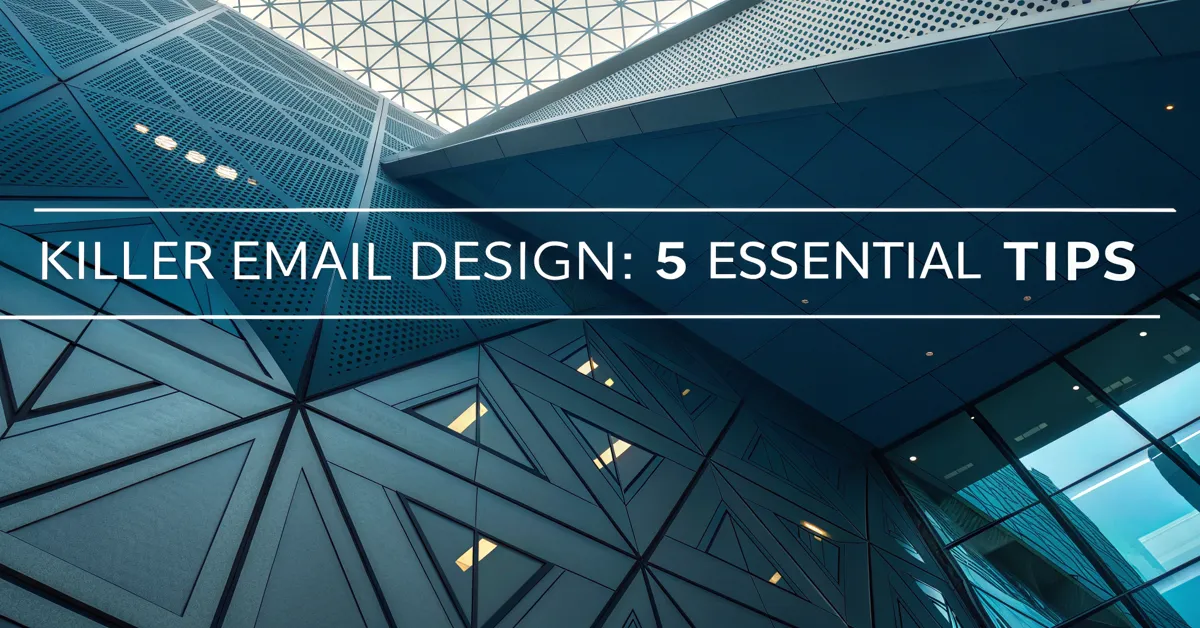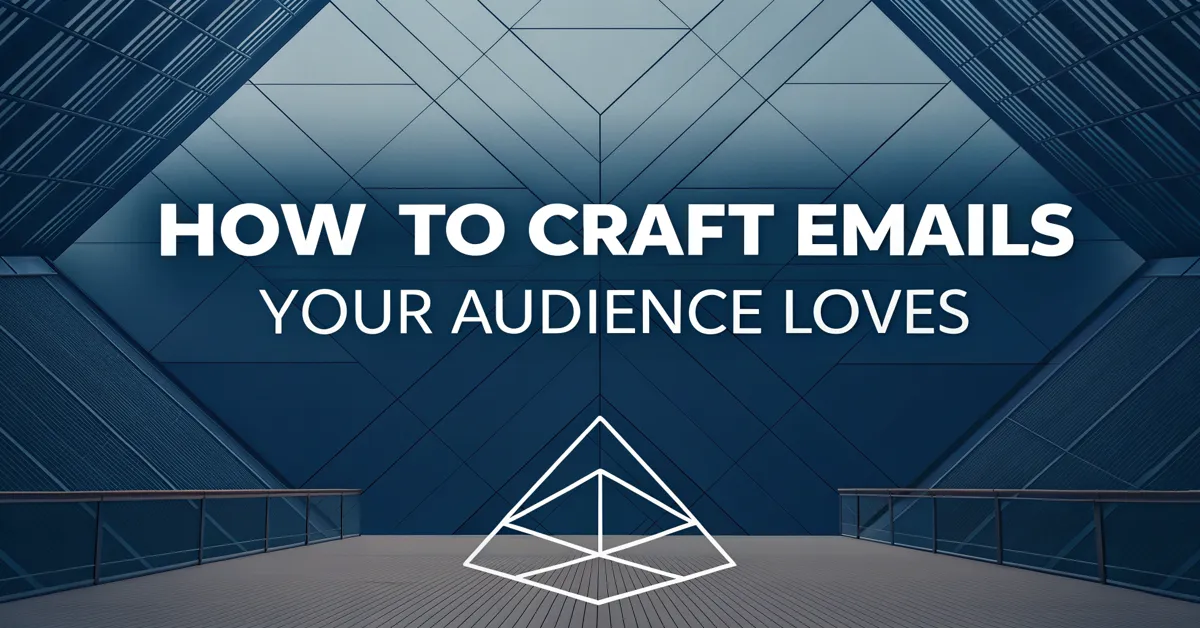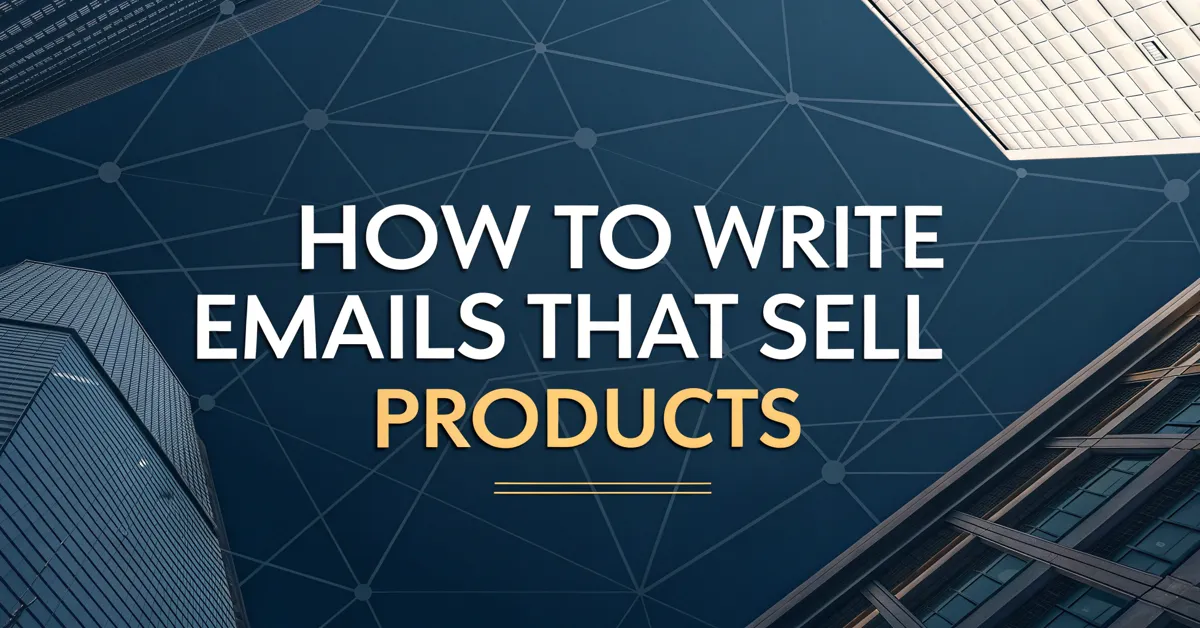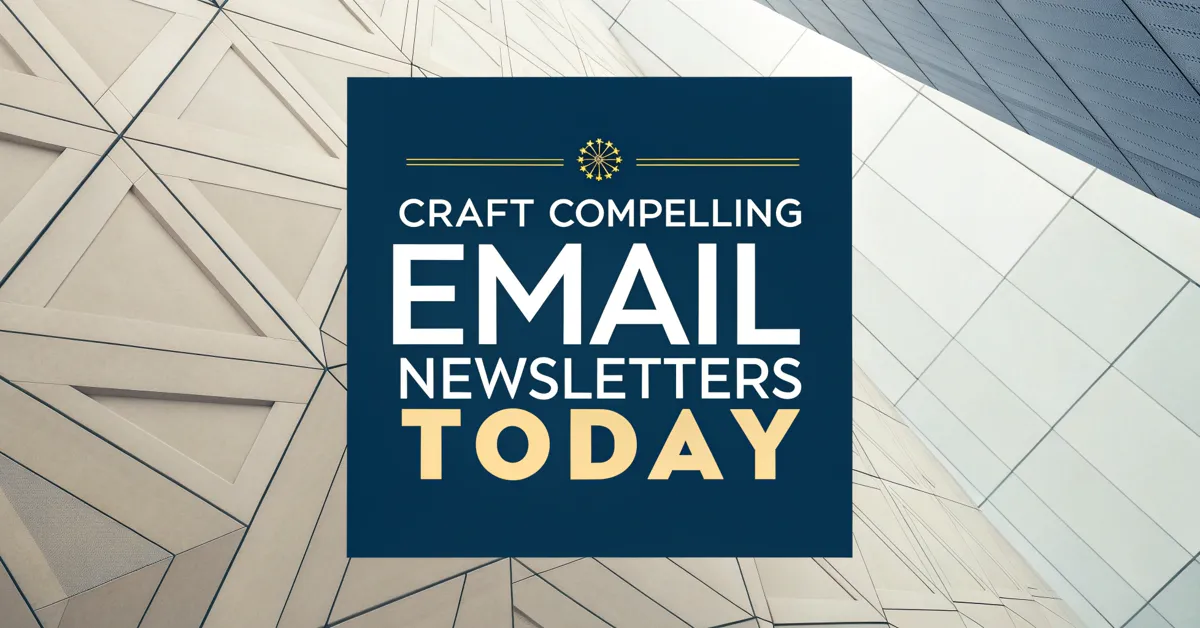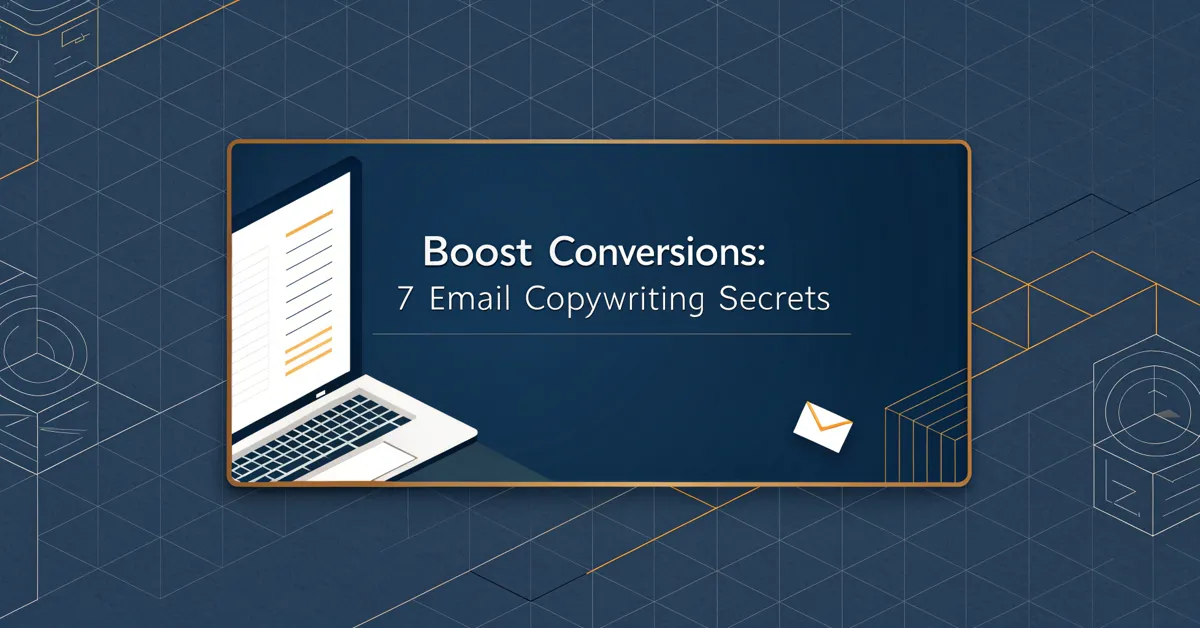Emails flood our inboxes daily. Yet, some stand out. They grab our gaze, make us read, and even nudge us to act. What makes these emails different? It’s often a matter of design—a killer email design that can make all the difference. Let’s dive into how to craft such emails that win.
When done right, email design elevates more than just aesthetics. It boosts engagement, drives clicks, and forms a strong bond with your audience. But poor design can have the opposite effect. A cluttered layout, hard-to-read text, or a call-to-action that blends in can lead to missed chances. It can mean that the message you so much labored on gets lost in the shuffle.
So, if you’re aiming to lift your email game, you’re in the right place. In this piece, we’ll unpack the essential elements of killer email design. You’ll learn five crucial tips to use for emails that will catch the eye and get the results you crave.
Embrace the Power of White Space
White space, often called negative space, is the blank area around elements in an email. It’s not just empty space; it’s a design tool that can make your emails feel crisp and clear. Think of a crowded room versus an open space, the one where you feel more at ease? It’s the same with your email.
A well-used white space does many things. It guides the eye through the content, makes key parts pop, and keeps the whole email from feeling too stuffed. Too much clutter can make the reader feel uneasy. It can push them away. But when you give your elements enough breathing room, you give your message space to land.
How to Use White Space Well
- Between Text Lines and Paragraphs: Increase the space between lines and paragraphs. This improves how well people read the text.
- Around Images and Buttons: Place a good amount of space around images and buttons. This makes them more clear. And it helps them to stand out.
- Within Layout: Use white space in your email layout. It can help split your content into clear, easy-to-scan parts.
Don’t fear the blank space. It is not an empty waste, it is a crucial design element. It can lift your email design in a big way. By using white space, you’re not just clearing clutter. You’re making room for your message to shine.
Keep It Simple
In email design, less is often more. A simple design can be more effective than a complex one. It ensures your message is clear and fast. The reader’s mind is not overwhelmed by countless, needless elements. A simple email keeps the reader focused on what matters most.
A complex email may sound good on paper. But a simple one often works best. Think about the last time you got a very fancy, cluttered email. Did you read it with ease? Or did you give it a glance and then move on? Simplicity makes emails more readable. It leads to better user engagement.
Tips for a Simple Design
- Use One Main Call-to-Action (CTA): Stick to a single, clear CTA. This keeps the reader focused on what to do next.
- Use Few Colors: Keep your color use limited. Use a few colors that fit your brand.
- Use Simple Fonts: Choose fonts that are easy to read. Stick to one or two fonts at most.
- Keep the Layout Clean: Use a clear layout. Avoid many columns or complex grids.
A simple email design does more than just look good. It can help your audience get to the message fast. By keeping things simple, you make it easier for your readers to focus on your message. And when they focus on your message, they are more likely to take action.
Make Your Emails Mobile-Friendly
Most people now read their emails on their phones. That’s why a mobile-friendly email is not a nice-to-have; it’s a must. If your emails don’t look good on a small screen, many people won’t read them. This would be a huge loss. An email that fits well on mobile devices helps you reach a wider audience. It ensures that your message reaches all people as it was intended.
A mobile-friendly email adjusts itself to fit on a phone’s screen. The text is still easy to read. The images are clear. The buttons are easy to tap. This gives your readers a good experience. It is more likely to make them stay and engage with your content.
How to Make Emails Mobile-Friendly
- Use a Responsive Layout: Choose a layout that changes to fit any screen.
- Use Large Text Sizes: Ensure the text is easy to read on small screens. Use big enough fonts.
- Make Buttons Big Enough: Make your buttons large and easy to tap. Use a good amount of space around them.
- Use a Single-Column Layout: A single-column layout works best on phones. It keeps the email easy to scan.
Mobile-friendly design is more than just a trend, it is how things work today. When you make your emails fit mobile devices, you give your readers a much better experience. It makes it easier for people to read your message and engage with your brand. By keeping mobile users in mind, you’re making sure your email has the best chance to shine.
Use Images with a Purpose
Images are a great way to make your emails more appealing. But it’s not just about adding pictures. Images should add value to your message. They should be there to back up your text, not just for show. The best images make the email come alive. They connect with the reader’s emotions.
A random picture adds nothing. But a smart visual can draw the eye, set the mood, or show a product in action. Well-placed images help break the text, make it easy to read, and give a visual break. When you put them to use in this way, they are not just decorations, they boost your message.
Tips for Using Images Right
- Use High-Quality Images: Always choose clear, high-resolution images. A blurry image looks bad and it can hurt your brand.
- Keep Image Sizes Small: Big images can make your email slow to load. Use a tool to shrink image sizes.
- Use Alt Text: Add alt text to all images. This text shows up if the image can’t load. It also helps people with screen readers.
- Use Images That Fit Your Message: Pick images that match your email’s main point and your brand.
Images are strong tools, but they must be used with care. It is not just about making the email look pretty, it is about making your email more useful and easy to grasp. By using images on purpose, you boost your message. This also gives your readers a better and more engaging experience.
Make Your Call-to-Action (CTA) Stand Out
The call-to-action (CTA) is where you ask the reader to do something. It may be to visit your site, sign up for your emails, or buy your product. If the call to action is lost in your email, you lose your chance to get a response. A clear and bold CTA makes the reader know what to do next. It is key to getting the results you want.
A good call-to-action must be easy to find. It should tell the reader what to do and why they should do it. Using action words, like “Shop Now,” “Sign Up Today,” or “Learn More,” can make your CTA more direct. When your CTA stands out, your readers are more likely to click.
Tips for a Great CTA
- Use a Clear Button: Make the button big and bold. Use a color that stands out.
- Use Action Words: Start the button’s text with words that tell the reader what to do.
- Use White Space: Place white space around the button. This makes it more clear and easy to see.
- Make It Easy to Find: Place the CTA in a spot where it’s easy to see. Usually, below the main text or image.
Your call-to-action is the guide that leads your readers. It tells them how to engage with your brand. A well-made CTA is not just about getting clicks. It is about getting your readers to take the next step in their journey with your brand. When your CTA is bold and clear, it makes it easy for your readers to act.
Beyond the Basics: Fine-Tuning for Email Success
Now that we’ve covered the core tips, let’s look at some extra steps that can lift your email design game even higher.
Test Your Emails Across Devices and Email Clients
Not all email clients display emails the same way. An email that looks great in one client may appear broken in another. This makes testing crucial. If you want to make sure all your readers get the best experience. It can also tell you how users interact with your design.
Testing lets you find and fix errors. It ensures that all your links work. It checks that the email shows up well on different devices and in different inboxes. By doing this testing, you are taking every needed step to make sure all your readers have the best experience. It also lowers the odds of missing important clicks and sales.
How to Test Your Emails
- Use Email Testing Tools: There are tools to check emails in many clients.
- Send Test Emails: Always send test emails to various email addresses (like Gmail, Outlook, Yahoo) before sending out a mass email.
- Check on Various Devices: Test the email on both desktop and mobile devices to ensure it looks and works well on all screen sizes.
Email testing is not just a step to take, it’s a way to show you care about your readers. It ensures that your email gets seen as you intend, and gives the best experience to your target.
Use a Consistent Brand Voice
Your email is a chance to speak with your audience. The way you say things should fit how you speak in other places. This is what’s called your brand voice. It gives your emails a sense of you. This will make your messages feel like they are coming from a known source.
When you use a consistent brand voice, you help build trust. Readers know what to expect when they read your emails. This makes them more likely to read them and take part. They will feel like they are talking to a real person and not some robot.
Tips for a Consistent Brand Voice
- Define Your Brand Voice: Choose how your brand should sound. Is it fun? Serious? Informative?
- Keep It the Same: Always use the same style and tone. This goes for all your emails, your site, and social media.
- Train Your Team: Make sure everyone writing emails knows your brand voice.
A brand voice builds trust. It makes your emails more than just a sales tool. It forms real bonds with your readers. When your emails sound like you, your readers get to know you better. This increases their trust in your brand.
Be Mindful of Load Times
No one wants to wait a long time for an email to load. Long load times can make people lose interest. That means a lost chance to make that sale. A fast-loading email is more likely to get read and clicked on. It makes it easier for readers to get to your message.
The load time depends on images, code, and email size. When you keep your emails lightweight, your readers get the message fast. They’re more likely to read it and take action. It also makes their user experience a pleasant one, not frustrating.
How to Improve Load Times
- Use Compressed Images: Reduce image file sizes by compressing them. This will save you precious time.
- Reduce Code: Keep the code clean. Get rid of unnecessary code that takes up space and increases loading time.
- Keep It Simple: Use simple layouts, not very complex designs. This will decrease loading times.
Load times are part of the user experience. A fast email makes it easy to see what’s inside. By making sure your emails load quickly, you respect your readers time and your brand’s image.
Personalize Your Emails
Personalized emails feel more like a one-to-one talk. It shows the readers that you know them. They are not just some name on a list. They’re a person you care about. Emails that feel personal are more likely to grab attention and boost clicks. It can also increase sales.
Personalization is not just about adding their name. It’s also about talking to them in a way that fits their needs and likes. You must speak to your readers’ personal interests and needs. This can make your email more important and relatable for them. When your message feels like it was written just for them, it gives you better results.
How to Personalize Your Emails
- Use Their Name: Add the reader’s name in the email. This makes it personal.
- Segment Your List: Divide your email list into groups based on interest or user behavior.
- Tailor Content: Use data to give content that fits what each reader likes and needs.
- Use Dynamic Content: Display unique content that changes based on what you know about the reader.
Personalization shows care for your audience. It turns emails from a mass blast into a personal talk. When you speak to your readers’ individual needs, they become more engaged and ready to buy. It makes your email efforts more effective and increases brand loyalty.
The Final Touch: Your Email’s Impact
Killer email design isn’t just about a good-looking email. It’s about making your message stick with your audience. It’s about making each email count. Design done well can help you form bonds with your users. It makes it easier for them to engage with your brand and to take the next step.
These five tips—using white space, keeping it simple, going mobile-friendly, using images with a purpose, and making your CTA pop—give you the core of great email design. But these tips are only part of it. It’s also about continuous testing, a consistent brand voice, and fast load times, and personal touches that truly make a difference.
When you put these things into practice, you can take your email game up a level. You can write emails that get seen, get read, and make your readers act. You can turn your emails from just another email into a strong tool for success.
